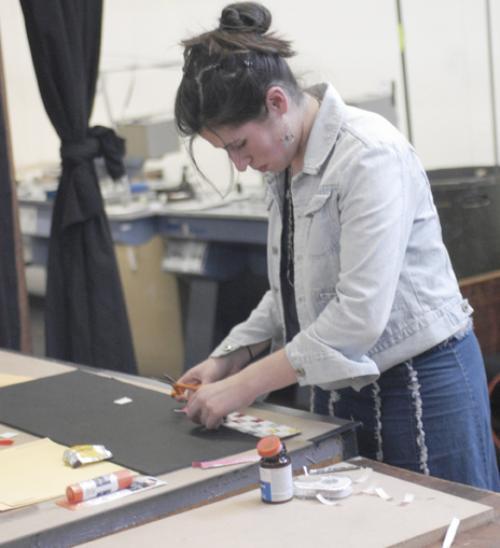Sever Hall’s animation studio has the feel of a mad scientist’s laboratory invaded by a troupe of kindergartners.
Impossibly retro-looking contraptions with names like “Launch Box” and “Technitron” line stark white walls separated by utility shelves and black curtains. The studio’s long central table is strewn with crayons and markers and covered in white paper, closer examination of which reveals sketches of cartoon characters, haphazard swirls and scribbles, even notes written back and forth between students.
What kind of class is this?
Many of the students in Visual and Environmental Studies 53d, “Fundamentals of Animation” cheerfully admit their doodling dates back to elementary school, when they fidgeted and scribbled out of restlessness. But in animation class, students have the chance to breathe life into their artistic creations, giving them expression, locomotion, and stories.
The quirky and playful appearance of the studio belies the hard work that goes on within. Every week, students have one four-hour studio class and a two-hour animation screening, in addition to numerous hours spent outside of class on assigned exercises and projects. Self-motivation is also a must: according to students, much of the application interviews were spent discussing how much time and effort students could reasonably devote to the course.
For all the hours spent in the studio, students are spurred less by rigid deadlines than by the sheer talent and expertise surrounding them. Weekly screenings, for example, bring first-rate animators from around the world to discuss their work. Visiting Lecturer Piotr Dumala is himself a master animator, and arrived with a hefty list of international film awards stretching back to his debut in the early 1980s.
Dumala’s literary bent, with films such as Franz Kafka (1990) and Crime and Punishment (2000) and a collection of short stories entitled The Gillette Game, emphasizes the course draws not only on visual content but on dramatic and psychological content as well.
For students with no formal training in drawing, of which there were several, the emphasis on content as well as form relieves some of the pressure of an otherwise visually-intensive course.
In spite of some competition for enrollment—one student estimated that this spring roughly thirty students applied and twenty were admitted—efforts to debunk the myth of VES exclusivity abound. According to teaching assistant Tim A. Szetela ’03, the year-long course was recently divided into two semester-long classes to allow more students to enroll.
Introduction to Animation’s comparative accessibility is evidenced by the class makeup—of ten students, only two are declared VES concentrators and four were officially undeclared freshmen. Giselle B. Schuetz ’06, for example, is concentrating in History of Science, while Daniel Ross-Rieder avows that he’s “never done anything artistic before.” Freshman have some priority in admittance, since students must have taken at least one VES course to be accepted as concentrators.
Once in the class, the atmosphere is relaxed but energized, informal but enthusiastic. During Tuesday’s studio session, three students had music piped in through headphones, while another two chatted about comic books as they sketched.
“Ooh, I want to do city images!” one girl exclaimed suddenly, looking up from a free-writing exercise in preparation for a final project. “I want empty streets, full streets…I want a dichotomy of energy!”
Part of the class’s vivacity comes from animation’s ability to take its subject matter to visual extremes. As Samuel T. Ray ’08 says, “There really are no limits.”
If VES were the athletics department, “Introduction to Animation” might be Harvard’s equivalent of “extreme sports.” Just keep those kids on skateboards away from the Launch Box, please.
Read more in Arts
Why Do I Keep Super Sizing Me?













